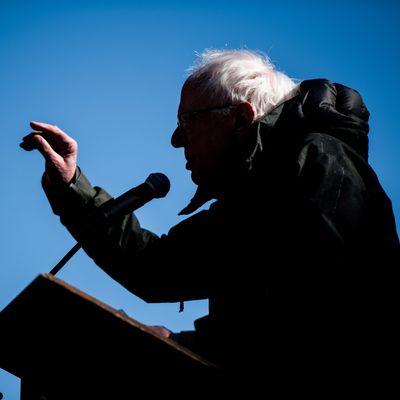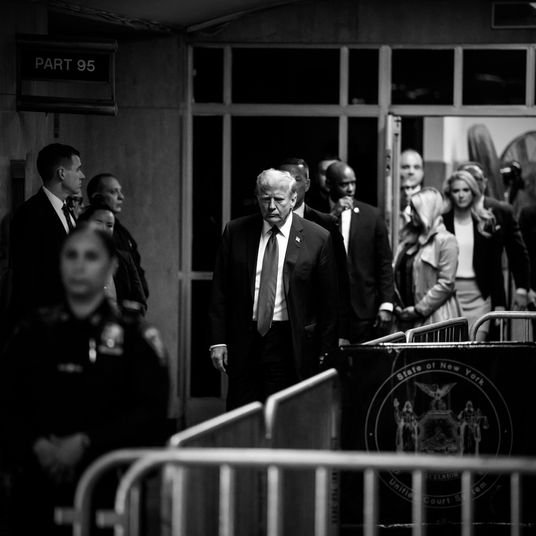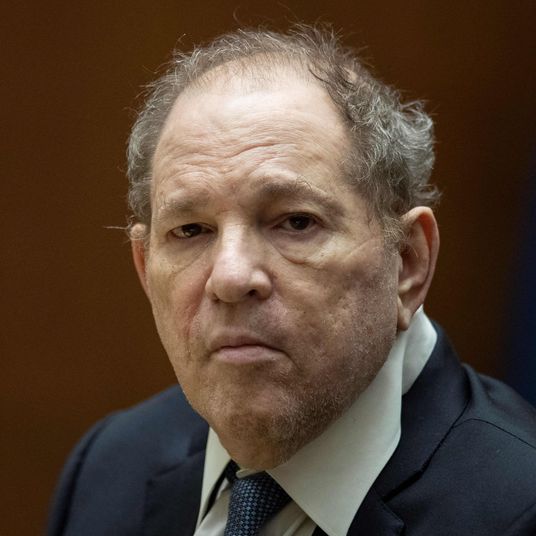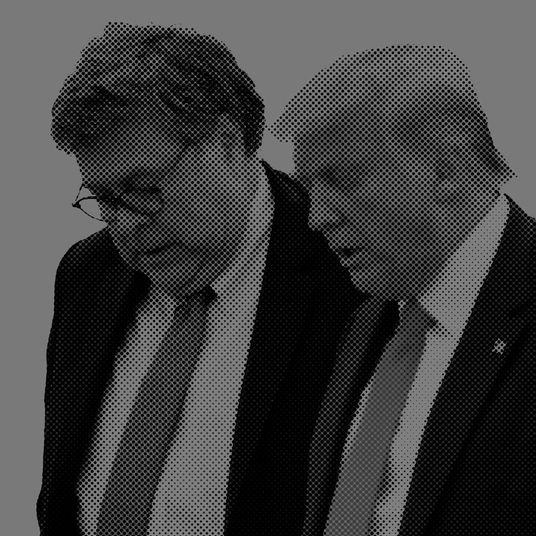
Bernie Sanders doesn’t need to tell you why he’s running for president. You know damn well what he’s going to say — the same thing he said while selling Eugene Debs documentaries door-to-door in the 1970s, or running for mayor of Burlington in 1980s, or filibustering a budget deal in 2010, or fomenting “political revolution” three years ago: The millionaires and billionaires have too much, working people have too little, and the latter can only rectify this situation by mobilizing en masse against the plutocracy that oppresses them.
Nevertheless, Sanders did take the time to reiterate this message Tuesday, when he unveiled a pair of announcement videos for his 2020 presidential campaign. And one of these productions is actually focused on various things that have changed since 2016 — the socialist senator just isn’t one of them. Rather, the spot highlights how Sanders’s signature policy proposals have moved from the margins of Democratic politics, to the center, to (in some states and localities) the law of the land.
To some pundits, these successes amount to a liability for Sanders in 2020. Last time around, the septuagenarian socialist had sole ownership of ideas like Medicare for All, a $15 minimum wage, and tuition-free public college. Now, those positions are the collective property of most of the Democratic field. And if primary voters have the option of backing a younger, less white, female champion of such proposals, why would they pick the old Vermonter who won’t even call himself a Democrat? After all, even if progressives are suspicious of late converts like Kirsten Gillibrand and Kamala Harris, Elizabeth Warren’s hat is now in the ring — and with it, her plans for expropriating (a small fraction of) the one’s percent’s wealth, and giving workers representation on corporate boards.
Clearly, Sanders sees things differently. In his campaign’s view, the fact that his fingerprints are all over his rivals’ platforms is an unambiguous strength. If the whole field agrees that Sanders’s had the right ideas (before they did), why would voters pick an imitation over the genuine article? Who wants RC Cola when you can have classic Coke?
Beyond the singular credibility of his commitment to social democratic reform, Sanders argues that his theory of change distinguishes him from the rest of the Democratic field.
“I think what maybe distinguishes this campaign from the others,” Sanders told CBS’s John Dickerson Tuesday morning, “is not only that these are in fact issues that we did raise — and had to take on enormous opposition as we did — but also that … I understand from the bottom of my heart that real change in this country will never come about unless there is struggle, unless millions of people stand up and fight for change.”
This point has been central to the Sandernista case against Elizabeth Warren. As Bhaskar Sunkara, founder of left-wing journal Jacobin, argued last year, the only way to arrest America’s descent into a neo-Gilded Age “is to rebuild the trade unions and left-wing political movements that could actually bring about a different sort of political economy. And that won’t come from the politics of shared responsibility, or clever policy initiatives, it’ll come from the mobilization of people on the streets, and in their workplaces and communities. Sanders is the only candidate that can open up those possibilities.”
But the idea that Elizabeth Warren preaches corporate responsibility, and better living through technocracy — while Sanders alone calls for bottom-up political reform — is no longer true (and arguably, hasn’t been for a decade or so). In fact, the Massachusetts senator officially launched her presidential campaign in Lawrence, Massachusetts, where 20,000 textile workers went on strike in 1912. Warren opened her announcement speech by telling the extraordinary story of a multiethnic, largely female workforce that took on mill owners, the local government, and militias — and through the power of solidarity, won higher wages, overtime, and progress for the entire working class.
“Within months, Massachusetts became the first state in the nation to pass a minimum wage law,” Warren said. “Because of workers here in Lawrence — and all across the country — we have weekends!”
Nevertheless, if Sanders’s supporters exaggerate the rhetorical distinctions between Warren and their hero, the argument that the Vermonter is uniquely committed to movement politics remains plausible — and not only because he’s been involved in such politics for longer than Kamala Harris has been alive. Put simply, he needs to believe in his theory of change more than any other Democratic candidate does. By refusing to identify as a Democrat — and making the Donkey Party a perennial punching bag in his stump speeches — Sanders has alienated the party’s leadership, major donors, staffers, and institutions to an unparalleled degree. That dearth of Establishment support, combined with his (relatively) unappealing demographic profile, mean that Sanders’s path to victory requires the mobilization of an ideologically committed left-wing social movement.
The senator does enter the 2020 race with higher name recognition than virtually any other candidate, campaign infrastructure (of some kind) in every state, the biggest mailing list around, and a relatively strong position in current polling. He also has a foreign policy vision that’s far more compelling than the improvisatory one he put forward four years ago. But given the size and quality of the 2020 field, these advantages are unlikely to be sufficient.
If Sanders finds a way to win the nomination — as the Democratic Establishment’s 32nd-favorite candidate — it will be because grassroots groups like Our Revolution, Democratic Socialists of America (DSA), and various left-wing trade unions demonstrate a strength they’ve heretofore lacked. In 2018, “Bernie’s army” won very few primary battles. One could see that lackluster performance as an indictment of Sanders’s theory of change. Or, one could see it as proof positive that Sanders is the only candidate capable of bringing the “revolution.” It all depends on what future you choose to believe in.






























